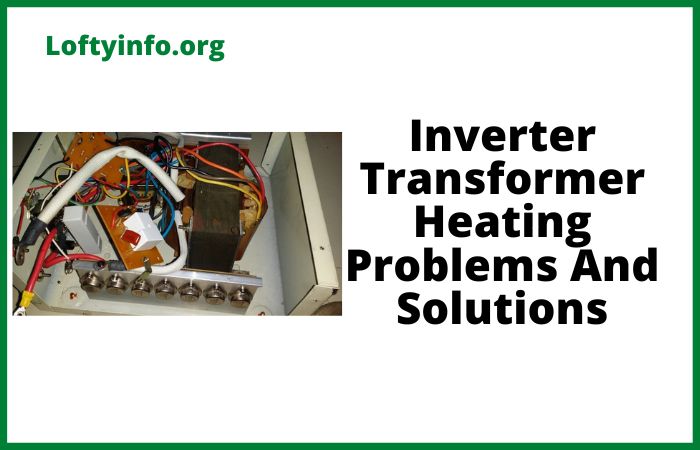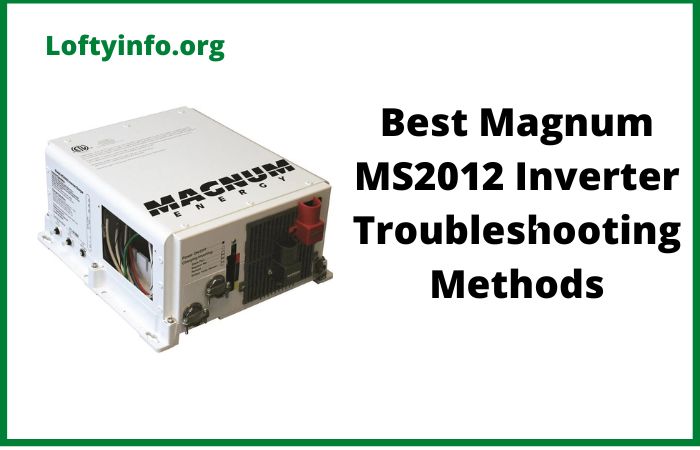Inverter Transformer Heating Problems: Critical Causes And Best Solutions
Inverter transformer heating is one of the most common yet concerning issues that can significantly impact the performance, efficiency and lifespan of your power inverter system. When transformers operate at temperatures beyond their design specifications, they not only consume more energy but also face the risk of permanent damage, making it crucial for technicians and users to understand the underlying causes of excessive heat generation.
Transformer heating in inverters occurs when electrical energy is converted to unwanted thermal energy due to various inefficiencies in the system.
While some heat generation is normal during operation, excessive heating indicates underlying problems that require immediate attention.
The optimal operating temperature for most inverter transformers ranges between 40-60°C, and temperatures exceeding 80°C typically signal serious issues that need prompt resolution.
Causes Of Inverter Transformer Heating Problems
1) Overloading
Overloading represents the most frequent cause of inverter transformer heating problems, occurring when the connected load exceeds the transformer’s rated capacity.
When you connect appliances that collectively draw more current than the transformer can safely handle, the windings experience increased current flow, leading to higher I²R losses and subsequent heat generation.
The relationship between load and heat generation is exponential rather than linear.
A transformer operating at 120% of its rated capacity doesn’t just produce 20% more heat, it can generate up to 150% more thermal energy due to the squared relationship between current and power loss.
This excessive heat accumulation occurs because the transformer’s cooling system cannot dissipate the additional thermal energy efficiently.
Common scenarios leading to overloading include connecting multiple high-power appliances simultaneously such as running air conditioners, microwave ovens and electric heaters on the same inverter system.
Motor starting currents can cause temporary but significant overloads as induction motors typically draw 5-7 times their rated current during startup, creating sudden thermal stress on transformer windings.
2) Voltage Fluctuations Creating Thermal Stress
Input voltage variations significantly impact transformer heating, as these devices are designed to operate efficiently within specific voltage ranges.
When input voltage deviates from the nominal value, the transformer must work harder to maintain stable output, resulting in increased losses and heat generation.
Low input voltage conditions force the transformer to draw higher currents to maintain the same power output, following the inverse relationship between voltage and current.
For instance, if the input voltage drops by 10%, the input current increases by approximately 11%, leading to roughly 23% higher copper losses and corresponding heat generation.
This scenario commonly occurs in areas with poor power infrastructure or during peak demand periods.
Conversely, high input voltage conditions create different but equally problematic heating issues.
Excessive voltage increases flux density in the transformer core, leading to higher core losses and eddy current generation.
The magnetic core becomes saturated more quickly, causing non-linear current draw and harmonic generation, which further contributes to heating through additional losses in both core and windings.
Rapid voltage fluctuations, often called voltage swings, create dynamic thermal cycling in transformers.
These fluctuations cause the transformer to continuously adjust its operating point, preventing thermal equilibrium and creating hotspots in windings where current distribution becomes uneven.
The constant thermal expansion and contraction also contribute to insulation degradation over time.
3) Poor Ventilation and Cooling System Failures
Inadequate heat dissipation represents a critical factor in transformer overheating, as even normally generated heat cannot be effectively removed from the system.
Inverter transformers rely on both natural convection and forced air cooling to maintain safe operating temperatures and any compromise in these cooling mechanisms leads to rapid temperature escalation.
Dust accumulation on transformer surfaces acts as thermal insulation, significantly reducing heat transfer efficiency.
A layer of dust just 2-3mm thick can reduce cooling effectiveness by up to 40%, as it prevents air circulation around the windings and core.
This problem is particularly severe in industrial environments or areas with high particulate matter in the air.
Blocked ventilation openings or malfunctioning cooling fans create restricted airflow conditions that prevent proper heat dissipation.
Many inverter systems use forced air cooling with strategically placed intake and exhaust fans.
When these fans fail or become obstructed, the internal temperature rises rapidly especially under load conditions.
The problem compounds as higher temperatures reduce the efficiency of remaining cooling mechanisms.
Improper installation location also contributes to cooling problems.
Transformers installed in enclosed spaces without adequate clearance cannot establish proper air circulation patterns.
The recommended clearance around transformers is typically 150-300mm on all sides but many installations ignore these requirements leading to heat buildup and eventual thermal damage.
4) Core Losses and Magnetic Inefficiencies
Transformer core losses consisting of hysteresis and eddy current losses become significant contributors to heating when the magnetic circuit operates inefficiently.
These losses occur in the iron core and are largely independent of load current meaning they generate heat continuously during operation, even at no-load conditions.
Hysteresis losses result from the energy required to repeatedly magnetize and demagnetize the transformer core during each AC cycle.
When the core material degrades due to age, contamination or manufacturing defects, hysteresis losses increase substantially.
Poor-quality core materials or cores that have experienced mechanical stress show higher hysteresis characteristics, leading to increased heat generation.
Eddy current losses occur when circulating currents flow within the core material due to changing magnetic flux.
While laminated cores are designed to minimize these currents, damaged or poorly assembled core laminations can create paths for larger eddy currents.
Insulation breakdown between laminations, often caused by moisture ingress or mechanical damage, allows eddy currents to flow more freely, generating significant heat.
Operating frequency variations also impact core losses significantly.
Transformers designed for 50Hz operation experience increased core losses when operated at different frequencies as both hysteresis and eddy current losses are frequency-dependent.
Variable frequency drives or modified sine wave inverters can create harmonic distortion that increases effective operating frequency, leading to higher core losses and heating.
5) Winding Problems and Electrical Faults
Internal winding defects represent serious causes of transformer heating that often develop gradually before manifesting as obvious failures.
These problems typically stem from manufacturing defects, installation errors or gradual degradation of electrical insulation systems.
Turn-to-turn short circuits within transformer windings create localized high-current paths that generate intense heat in small areas.
These faults often begin as insulation weakening due to thermal cycling, chemical degradation, or mechanical stress.
Once insulation breakdown occurs between adjacent turns, current circulates through the shortened path, creating hotspots that can reach temperatures well above safe operating limits.
Loose connections at transformer terminals or internal joints create high-resistance contact points that generate heat through resistive losses.
These connections may appear secure during installation but can loosen over time due to thermal cycling, vibration or corrosion.
The resistance at these points can increase dramatically, sometimes reaching several times the normal connection resistance leading to significant localized heating.
Winding imbalance in three-phase transformers causes unequal current distribution between phases, leading to higher losses in the more heavily loaded phases.
This imbalance can result from unequal load distribution, phase voltage variations or internal winding defects.
The overloaded phases generate excess heat while the overall system operates inefficiently.
Ground faults or insulation deterioration between windings and the transformer frame create additional current paths that contribute to heating.
These faults may not immediately cause system shutdown but create continuous power losses that manifest as elevated operating temperatures.
Progressive insulation degradation accelerates under thermal stress, creating a feedback loop that eventually leads to complete failure.
6) Harmonic Distortion and Power Quality Issues
Harmonic distortion in the electrical supply significantly impacts transformer heating by creating additional losses that don’t contribute to useful power transfer.
Modern electronic loads, including computers, LED lighting, and variable frequency drives, generate harmonic currents that flow back into the power system and increase transformer losses.
Non-sinusoidal currents contain frequency components that are multiples of the fundamental frequency and transformers experience increased losses when carrying these harmonic currents.
The skin effect becomes more pronounced at higher frequencies, forcing current to flow in a smaller cross-sectional area of the conductor effectively increasing resistance and generating more heat.
Third harmonic currents are particularly problematic as they add arithmetically in the neutral conductor of three-phase systems.
Transformer impedance varies with frequency, and harmonic currents encounter different impedances than fundamental frequency current.
Higher-order harmonics typically see increased impedance, but this doesn’t prevent their circulation; instead, it creates additional voltage drops and corresponding losses within the transformer windings.
Power factor issues related to reactive power flow also contribute to transformer heating. When connected loads have poor power factors, transformers must supply both real and reactive power, increasing the total current flow through windings even though only the real power performs useful work.
This increased current creates higher I²R losses without corresponding increases in useful power output.
The combination of harmonic distortion and poor power factor creates complex current waveforms that are difficult for transformers to handle efficiently.
Total harmonic distortion (THD) levels above 15% typically cause noticeable increases in transformer operating temperature, while THD above 25% can cause dangerous overheating conditions that require immediate corrective action.
Understanding these six primary causes of inverter transformer heating enables technicians and users to implement effective preventive measures and quickly diagnose heating problems when they occur.
Regular monitoring of operating temperatures, maintaining proper ventilation, ensuring appropriate load levels and addressing power quality issues can significantly extend transformer life and maintain system efficiency.
When heating problems persist despite addressing these common causes, professional electrical testing and analysis may be necessary to identify more complex underlying issues.






